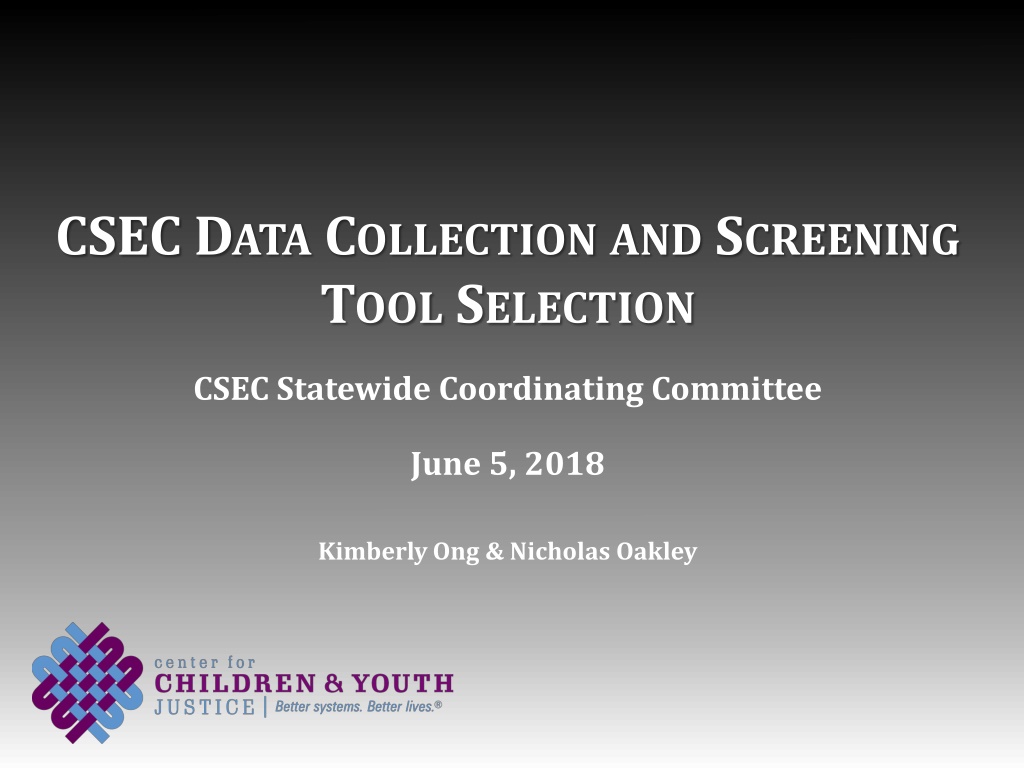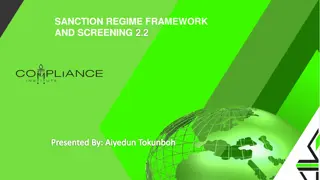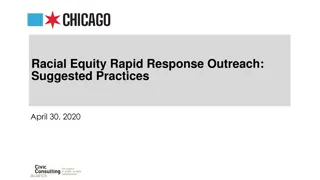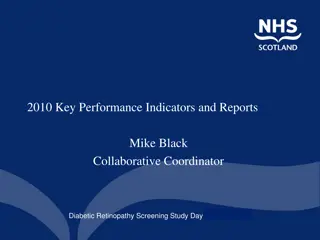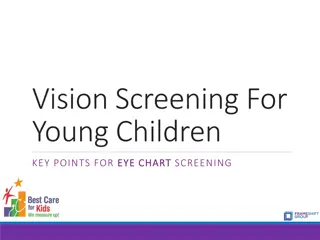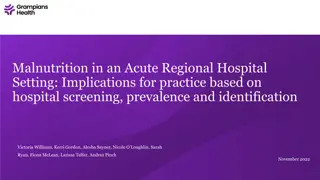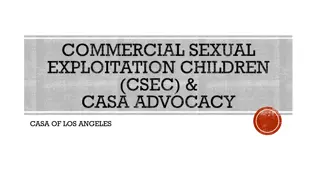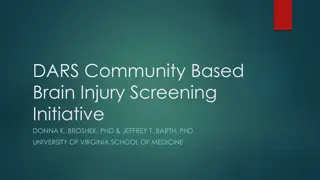Comprehensive Analysis of CSEC Data Collection and Screening Tools
The content discusses the findings from the 2017 Statewide Annual Report on Commercial Sexual Exploitation of Children (CSEC) in Washington State. It covers the identification and risk factors associated with CSEC, including indicators like housing instability, child welfare involvement, and juvenile justice interactions. Additionally, the report highlights the data collected through surveys on the needs and assessments of CSEC screening tools. Racial/ethnic disproportionalities and educational patterns among suspected or confirmed CSEC cases are also explored.
Download Presentation

Please find below an Image/Link to download the presentation.
The content on the website is provided AS IS for your information and personal use only. It may not be sold, licensed, or shared on other websites without obtaining consent from the author. Download presentation by click this link. If you encounter any issues during the download, it is possible that the publisher has removed the file from their server.
E N D
Presentation Transcript
CSEC DATA COLLECTIONAND SCREENING TOOL SELECTION CSEC Statewide Coordinating Committee June 5, 2018 Kimberly Ong & Nicholas Oakley 1
2017 Statewide Annual Report In the 2017 calendar year: 169 checklists were identified as suspected or confirmed CSEC (compared to 153 in 2016) 53% of suspected or confirmed CSEC are being identified by case authors, but not flagged by the checklist Racial/ethnic disproportionality continues when comparing suspected or confirmed CSEC to 2016 American Community Survey Estimates for ages 11-17 for Washington State 29.59% of suspected or confirmed CSEC did not attend school in the last term. School attendance is unknown for 43.20% of suspected or confirmed CSEC. 2 2
2017 Statewide Annual Report In the 2017 calendar year: 53.25% of suspected or confirmed CSEC screened experienced some level of housing instability 20.71% of suspected or confirmed CSEC screened experienced child welfare involvement 7.28% of suspected or confirmed CSEC screened experienced juvenile justice involvement 3 3
CSEC Indicators CSEC Identification / Risk Factors Youth is under age 18 and has a record of arrest for prostitution or related charges. No. 21 % 12.43 Youth is known to have engaged in sexual conduct for money, but no arrests or related charges. 52 30.77 Youth is known to have engaged in sexual conduct for an exchange other than a fee. 69 40.83 Youth is known to have received a fee or exchange for recruiting peers/others into CSE. 9 5.33 Youth is known to have been taken to clubs, hotels, casinos, or residences by adults and engaged in sexual conduct. 35 20.71 Youth is known to have been abducted/imprisoned or moved around for sexual activity. 18 10.65 Youth has been removed from an area of prostitution or other commercial sexual activity by authorities. Areas include strip clubs and massage parlors. 17 10.06 Youth is known to have engaged in exotic dancing at clubs, private parties, and/or possesses an exotic dancing permit. 7 4.14 Youth is known to have been subject to production, promotion, and/or distribution of pornography in some form. 21 12.43 Youth has been prostituted and/or sexually exploited as part of gang initiation, membership, or affiliation. 16 9.47 Youth has an explicit sexual online profile on internet community sites such as Backpage or Facebook that indicates CSE. 19 11.24 4 Youth is known to have a pimp, or acknowledged having a pimp ever. 30 17.75
CSEC Screening Tool Needs and Assessment: Survey Responses Survey data was collected from 5/7/18 5/30/18 38 respondents 5 5
CSEC Screening Tool Needs and Assessment: Survey Responses What kind of screening tool would be most helpful to your work? Case Review, Information Integration, Administered by Staff: 40% Questionnaire, Self-Completed or Administered by Staff: 60% Other: Concerns: Cannot use a self-administered tool Suggestions: Bridge Collaborative screening Staff-administered conversational questionnaire ties into rapport- building that also allows space for additional staff insights 6 6
CSEC Screening Tool Needs and Assessment: Survey Responses Which demographic questions would you prioritize and want to include in a screening tool? Age Housing Status Service Provision Systems Involvement Experience School Attendance Gender Identity Race/Ethnicity Sexual Orientation Gender Expression Country of Origin Gender Assigned at Birth Other: When staying with friends and family are there any requirements to that stay? History of sexual assault Marital status, Religious preference Current dating relationships 7 7
CSEC Screening Tool Needs and Assessment: Survey Responses Would it be valuable in your work to have access to a commercial sexual exploitation screening tool? Yes: 97.3% No: 2.7% Comments: Would be more helpful to have: Conversational guide, as opposed to direct question and answer State level data for best practice development to apply to specific regions and service implementation Easy screening for individuals who call in for information and services over the phone Concerns Accuracy of responses, despite tracking risk factors What screening tools have been successful for other organizations? 8 8
CSEC Screening Tool Needs and Assessment: Survey Responses What is the likelihood that your agency will participate in CSEC data collection? Definitely: 32.43% Very Likely: 27.03% Possibly: 37.84% Not Likely: 2.7% Definitely Not: 0.0% 9 9
CSEC Screening Tool Needs and Assessment: Survey Responses What are the barriers to your agency participating in data collection? Staff capacity: Training Time (to collect information, to adapt current systems) Lack of experience with CSEC Access to and agreement to share information Difficulty of getting young people to self-identify Accessible data collection tool Consistency in which tool should be used and what information should be collected, as dictated by funders Safe/encrypted User friendly Affordable Confidentiality concerns 10 10
CSEC Screening Tool Needs and Assessment: Survey Responses What would help lower those barriers? Funding to increase staff capacity to collect data Increased availability and accessibility of trainings Training specific to data collection (why it s important, set expectations, how to use the database/tool, how to elicit information from youth, identifying risk factors, etc) Formal agreements drafted to share information and data Greater clarity regarding what data is being collected, how it can be collected, and the purpose of data collection User-friendly tool that is consistent for better data sharing and alignment across systems and agencies 11 11
CSEC Screening Tool Needs and Assessment: Survey Responses Is there any information not currently included in the quarterly reports that you would like to see? Law enforcement involvement 12 12
CSEC Screening Tool Needs and Assessment: Survey Responses Would your agency find summary data reports about the screening and demographics of the youth you serve and statewide summaries useful in your work? Yes: 94.44% No: 5.56% 13 13
Questions? Feedback? To connect with a CSEC 101 trainer or discuss Project Respect data participation, please email: Kimberly Ong kong@ccyj.org 14
